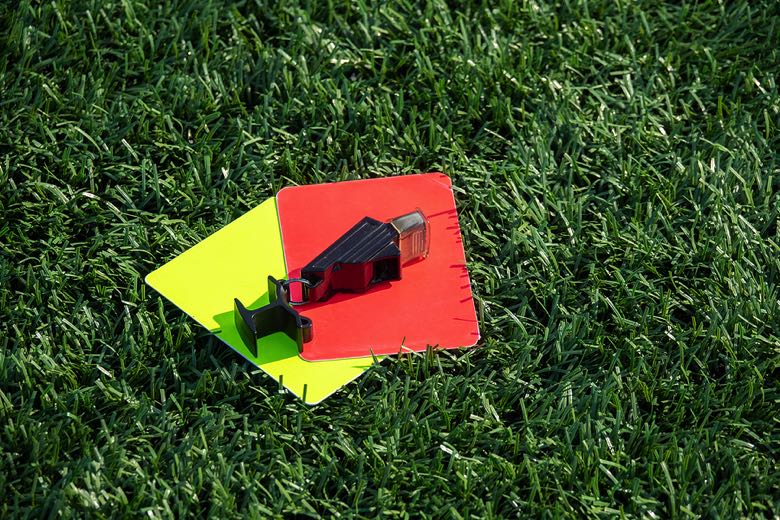There is nothing better than watching a master of the free kick step up to the plate. The surge of excitement as you watch them take up their signature stance before moving to strike the ball is incredible. This feeling is only exacerbated if the ball hits the back of the net.
Players that spring to mind are Lionel Messi, Cristiano Ronaldo, and David Beckham, with their ability to rifle a ball into the back of the net something that has seen more than one YouTube montage created for their exploits. Hours of practice at the training ground all for that one moment in a game have paid dividends, and it is usually the skill you see most outfield players practicing at their local park.
Despite being one of the parts of the game that stands out the most, there are actually a number of rules that few people know when it comes to free kicks. Indeed, if you ask your average Joe on the street, they will not understand what a direct or indirect free-kick is, how the advantage law works, or how far away the wall must be from a free-kick. In this guide to the rules of free kicks, we will look to shed some light on this part of the game.
The History of the Free Kick
The free kick has been around for so long that it is difficult to imagine the game without this way of restarting the match. The free kick dates back to the early 19th century in school football games. It was usually awarded as a reward for a fair catch, after touching down or through an offence from an opposing player. This was back when the rules of football were far different to what we know and love today.
Original FA Rules
The original FA Rules regarding free kicks in 1863 saw one awarded for either a fair catch or a touch down. However, when the FA rules were revised in 1866, the free kick rule was scrapped. 1867 saw Sheffield Football Club proposing that handling the ball should be banned, with a free kick awarded to punish this. However, this was not adopted at the time.
By 1870, handling the ball was banned by the FA. 1872 saw free kicks return as a punishment for handling the ball, although a player could not score directly from a free kick. However, this rule change did not specify how a free kick should be taken. An amendment in 1873 specified that the ball had to be on the floor, with opponents at least 5.5 meters away from the ball unless they were behind their own goal line. This was increased to 9.15 meters in 1936.
Team Cannot Score an Own Goal from Their Own Free Kick
One lesser-known rule about free kicks is that a team cannot score an own goal from their own free kick. For example, if a player were to pass the ball into their own net from a free kick and the ball is not touched by any other player, then a corner is awarded to the opposing team.
How Is a Free Kick Taken?

In 1887, it was considered that the ball must be rolled over before it was in play again. This was made slightly more confusing in 1895, with the rules stating that the ball had to make a ‘complete circuit or travel the distance of its circumference’ before being in play again.
However, this rule was scrapped in 1997. The new law saw the ball as being back in play as soon as it was touched and moved. This was clarified in 2016 with the ball having to clearly move for it to be back in play.
1874 saw the player that took the free kick forbidden from touching the ball again until another player had touched it. 2007 saw the law updated with regard to taking the free kick. It specified that lifting the ball with one or both feet were legitimate ways of taking a free kick.
What Is a Free Kick?
A free kick is a kick of the ball where an opposition player is unable to interfere with the player that is kicking the football. In normal play, if one team has the ball, any of the other opposition players are free to try to legally take possession from them. However, when a free kick is awarded, the infringing team must not interfere with the opposition when they are trying to kick the ball.
A free kick can sometimes see a short pass played to a player, while it can also see a long ball from one part of the pitch to another. However, when someone talks about a free kick, it will usually bring up ideas of players curling an effort into the top corner or smashing the ball through the wall and beyond the helpless goalkeeper. While most people will know a foul is a chance for an attacking player to take a shot or put the ball into the box, few actually know the difference between a direct and indirect free kick.
What Is a Direct Free Kick?

Introduced in 1903, a direct free kick is the most common of the two that you will see in a game of football. Most free kicks will be direct. A direct free kick is one that a player can score a goal directly from. It means that the ball does not have to touch another player before hitting the back of the net for it to count.
The best way to remember it is to think that from a direct free kick, a player can score directly. The wall must be at least 10 yards away from the kick taker for any direct free kick. The wall itself is made up of the defending players looking to get in the way of the ball. Previously, players on the attacking team were able to be a part of the wall as they looked to disrupt the defensive team. However, a rule change in 2019 saw all attacking players forced to stay at least one meter away from the wall until the ball is played.
When it comes to a direct free kick, defending player will do anything within their power to stop the ball hitting the target. Most walls will jump as they try to ensure they are in the way of the ball. Many teams have also adopted the ‘draft excluder’. This sees one player lie down or kneel behind the wall to try to stop a drilled shot on the floor going underneath the jumping wall.
What Is an Indirect Free Kick?
An indirect free kick is something that less people are aware of because it happens less frequently. An indirect free kick means that a player cannot score directly. This means that the player that wants to take a shot at goal must have the ball touched by another player before they can shoot, or they must touch the ball before another player can have an effort on goal. The most common type of indirect free kick comes from a player being in an offside position and having some form of impact upon the ball.
One of the most intriguing ways an indirect free kick can be awarded is via the goalkeeper. A referee can award an indirect free kick if the goalkeeper keeps ahold of the ball for longer than six seconds or touches the ball again after they have released it before the ball takes a touch from another player.
However, the most common way for an indirect free kick to be awarded is when a player is deemed to have passed the ball back to their goalkeeper, only for the ‘keeper to handle the ball. This will usually lead to an indirect free kick in the box, with madness ensuing as the goalkeeper is joined by their entire team on the line.
Will a Foul Always End in a Free Kick?
No, depending on the state of the game, a foul may not end in a free kick. While a foul will usually see a free kick given if a player concedes possession, the referee can choose to play an advantage if there is scope for play to continue.
What Is the Advantage Rule?

The advantage rule allows play to continue after a foul has occurred. Usually, if a foul has been committed, the referee will stop the game and award a free-kick to the player that has been fouled. This will often happen if there has been an infringement in the team’s box or close to their goal and they lose the ball because of this foul. It is perceived that there is no advantage to be had by the side that has been fouled.
However, if a player is fouled and the team keep the ball despite this infringement, the referee can choose to play the advantage. This has often resulted in a shot at goal, or a goal being scored. The advantage rule is particularly important when a break is happening. If a side is able to turn defence into attack quickly, then the opposing team may try to stop the attack by making a cynical foul.
Without the advantage rule, the referee would stop the game and award a free kick and a card, depending on how bad the foul was. However, allowing for the referee to catch up and award the foul and a card would see any potential counterattack ended.
What Is the Rolling Ball Rule in Football?
The restart of play in football will almost always see the ball kicked from a stationary position. You will notice that from the kick-off, corners, goal kicks and free kicks, that the ball is not moving. If the ball is moving and it is noticed by the referee, then they will halt play and order the ball to be taken back to the relevant spot for the kick to be taken again.
This can make things difficult for a team if they win a free kick and try to take it quickly. There have been many examples of a team taking a quick free kick and finding a lot of space, only for the referee to blow their whistle because the ball was not stationary from the free kick. It is incredibly frustrating to see, but it is one of the rules of the game.

